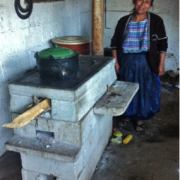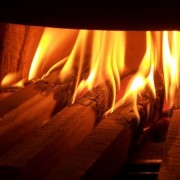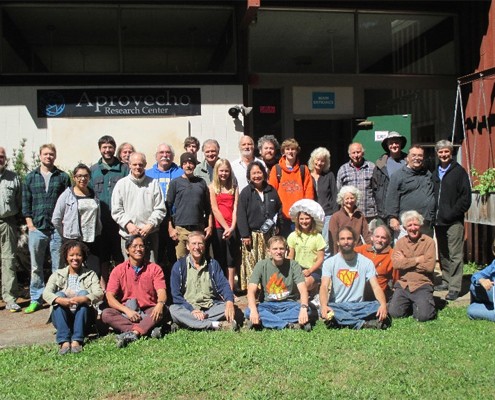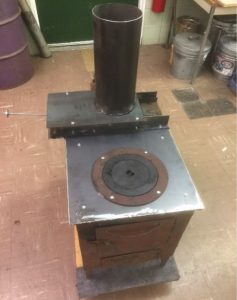Refractory Metals at 1,000 Hours in Salty Biomass Combustion Chambers: Big Problems
Energy for Sustainable Development 37 (2017) 20–32, Alloy Corrosion Considerations in Low-Cost, Clean Biomass Cookstoves for the Developing World Michael P. Brady, et al.
Michael Brady and others examined the following:
“Corrosion evaluation under cookstove-relevant conditions was studied by two methods: 1) lab furnace testing and 2) in-situ exposure in an operating cookstove. The lab furnace testing was conducted in air with 10 volume percent of H2O to simulate water vapor release from burning biomass, and direct deposition of salt onto the test samples to simulate the burning of highly corrosive biomass feedstocks. In particular, relatively high levels of salt species are encountered in many types of biomass and can lead to significantly accelerated alloy corrosion rates (Antunes and de Oliveira, 2013; Baxter et al., 1998; Saidur et al., 2011; Okoro et al., 2015). The in-situ cookstove testing was conducted using wood fuel that was pre-soaked in a salt water solution to yield accelerated, highly corrosive conditions.”
“Each day of testing, cookstoves were burned continuously for an average of ~6 h. The average fuel consumption rate was 570 g/h. To determine the range of temperatures that the alloy test samples would experience, a thermocouple was placed inside the chimney of each stove at the same height as the coupon fixture. Typical combustion chamber temperature profiles for the cookstoves, where test coupons were placed, are shown in Fig. 2. The average gas temperature range during steady state in-situ testing was 663 °C ± 85 °C”
“Much faster corrosion rates were observed in the 800 °C lab furnace testing where evaluation of most alloys stopped after 500 h of exposure due to excessive corrosion. Of the alloys tested to 1000 h, only the FeCrSi and pure Ni samples exhibited good corrosion resistance. The FeCrAlY and 310S alloy samples were consumed through-thickness in some crosssection locations.”
“Type 201 stainless steel, type 316 L stainless steel, and the 12 and 20Ni AFA alloys all exhibited relatively poor corrosion resistance in the in-situ cookstove testing, with metal losses in excess of −200 μm after only 500 h of exposure, consistent with the lab furnace trends. The types 310S and 446 stainless steels exhibited moderately worse corrosion resistance, with metal loss values of −190 μm and -230 μm after 1000 h. Despite exhibiting the best corrosion resistance in the lab furnace testing, the pure Ni suffered from −300 μm metal loss after only 500 h in the in-situ cookstove testing.”
“These findings indicate that ferritic FeCrSi alloy compositions in the range of ~ Fe-(13-17Cr)-(2–3.5)Si-(0.2–1)Mn-(0.3–0.7)Ti-(0.1–0.6)C wt.% show promise for use in biomass cookstove combustor components.”
In salty conditions should we switch to the use of refractory ceramic, I wonder?
Dean Still








